What Does NATO Stand For?
Established during the Cold War, the North Atlantic Treaty Organization (NATO) is a collective defense group meant to counter the Soviet Union. This security alliance of 31 countries, founded in 1949, has its headquarters in Brussels. It is a consensus-based alliance by individual states or subgroups that can initiate action outside of NATO auspices. However, members do not have to participate in every NATO action. Their military structure has two strategic commands: the Supreme Headquarters Allied Powers Europe near Mons, Belgium, and the Allied Command Transformation in Norfolk, VA.
What is the Purpose of NATO?
Its purpose today is to promote security and defense cooperation among its members as well as to serve as a consultation and coordination forum on security and political issues. A crucial provision in the founding treaty is Article V, which states that an attack on one is an attack on all members. It was first invoked in the Afghanistan War after the September 11th, 2001, terrorist attack in the United States. However, provisions within NATO do not supersede the U.S. Constitution. Indeed, approval to go to war must be approved by U.S. Congress.
How do Countries Join NATO?
Any European state needs a unanimous invitation by NATO members to join. Twelve countries formed the original alliance in 1949, and it has since grown to 31. Lastly, Finland joined in 2023. In addition, an invitation is out to Sweden, the next country expected to join the organization. Continue reading to learn more about the 31 countries that are member states of NATO. All population statistics are from 2024.
Albania (2009)

This southeastern European country is located on the Balkan Peninsula.
©Andrii Lutsyk/Shutterstock.com
Fun Fact: Mother Teresa is from Albania and a Nobel laureate recipient.
Joined NATO: 2009
Location/Border States: This southeastern European country on the Balkan Peninsula shares a border with Serbia, Kosovo, Montenegro, Macedonia, and Greece, in addition to the Adriatic and Ionian Seas.
Government type: Parliamentary republic
Population: About 2.8 million
Belgium (1949)

Brussels is Europe’s NATO headquarters.
©jarrow153/Shutterstock.com
Fun Fact: Brussels is Europe’s NATO headquarters and is considered a world center for diplomacy and economy.
Joined NATO: A founding member of NATO since 1949
Location/Border States: Located in Western Europe, Belgium shares a border with Germany, the Netherlands, Luxembourg, and France, in addition to the North Sea.
Government type: Constitutional monarchy
Population: About 11.7 million
Bulgaria (2004)

The country adopted the current Bulgarian flag in 1991.
©eivanov/Shutterstock.com
Fun Fact: The discovery of Bacillus bulgaricus, one of the main bacteria in yogurt, was in Bulgaria.
Joined NATO: 2004
Location/Border States: Located on the Balkan Peninsula in southeastern Europe, Bulgaria borders Turkey, Greece, North Macedonia, Serbia, and Romania, in addition to the Black Sea.
Government type: Parliamentary representative democratic republic
Population: About 6.6 million
Canada (1949)
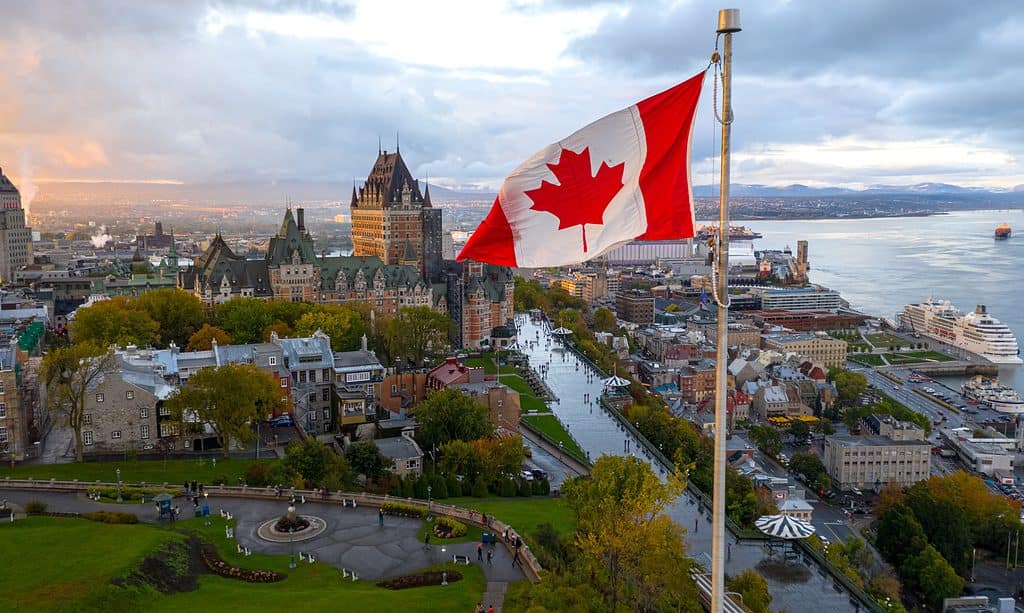
English and French are Canada’s official languages, but there are more than 200 spoken languages in the country.
©iStock.com/Gabriel Shakour
Fun Fact: Canada’s Great Trail stretches across the country from Newfoundland to Victoria in British Colombia.
Joined NATO: A founding member of NATO since 1949
Location/Border States: Canada spans more than half of the Northern Hemisphere and shares a border with the United States in addition to maritime borders with France and Denmark.
Government type: Constitutional monarchy
Population: About 38.9 million
Croatia (2009)

Croatian currency, “kuna,” is named after a rodent.
©dies-irae/Shutterstock.com
Fun Fact: Croatian currency, “kuna,” is named after a rodent, the marten.
Joined NATO: 2009
Location/Border States: Located in southeast Europe, Croatia borders Montenegro, Serbia, Herzegovina, Bosnia, and Hungary, in addition to the Adriatic Sea.
Government type: Parliamentary democracy
Population: About 4 million
Czechia (1999)
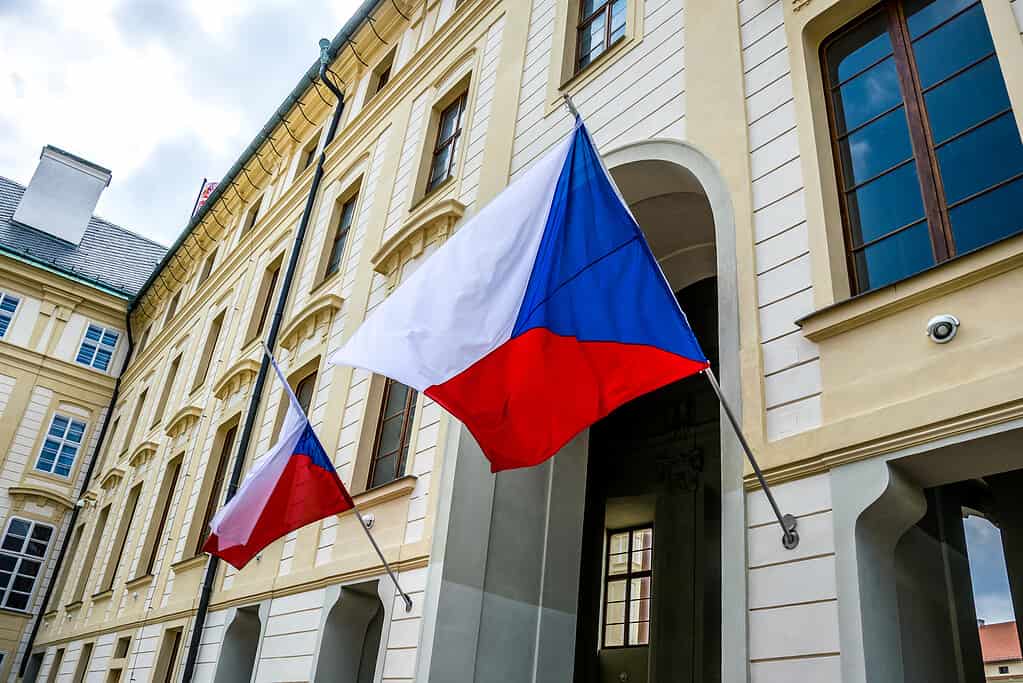
Czechia is also known as the Czech Republic, and the government prefers to use the former name.
©Konoplytska/iStock via Getty Images
Fun Fact: The word “robot,” first coined in 1921 in the Čapek play R.U.R. (Rossum’s Universal Robots,) is a derivative of the Czech word “robota.”
Joined NATO: 1999
Location/Border States: This landlocked nation in central Europe is bordered by Germany, Austria, Slovakia, and Poland.
Government type: Parliamentary democracy
Population: About 10.5 million
Denmark (1949)

The Jutland Peninsula and over 400 islands make up the Kingdom of Denmark.
©Nick N A/Shutterstock.com
Fun Fact: In 1932, carpenter Ole Kirk Kristiansen founded LEGO; it is an abbreviation for the Danish words “leg and godt,” which means “play well.”
Joined NATO: A founding member of NATO since 1949
Location/Border States: Denmark, in northern Europe, shares a border with Germany and the North and Baltic Seas, in addition to maritime borders with Sweden, Norway, and Canada.
Government type: Constitutional monarchy
Population: About 5.9 million
Estonia (2004)
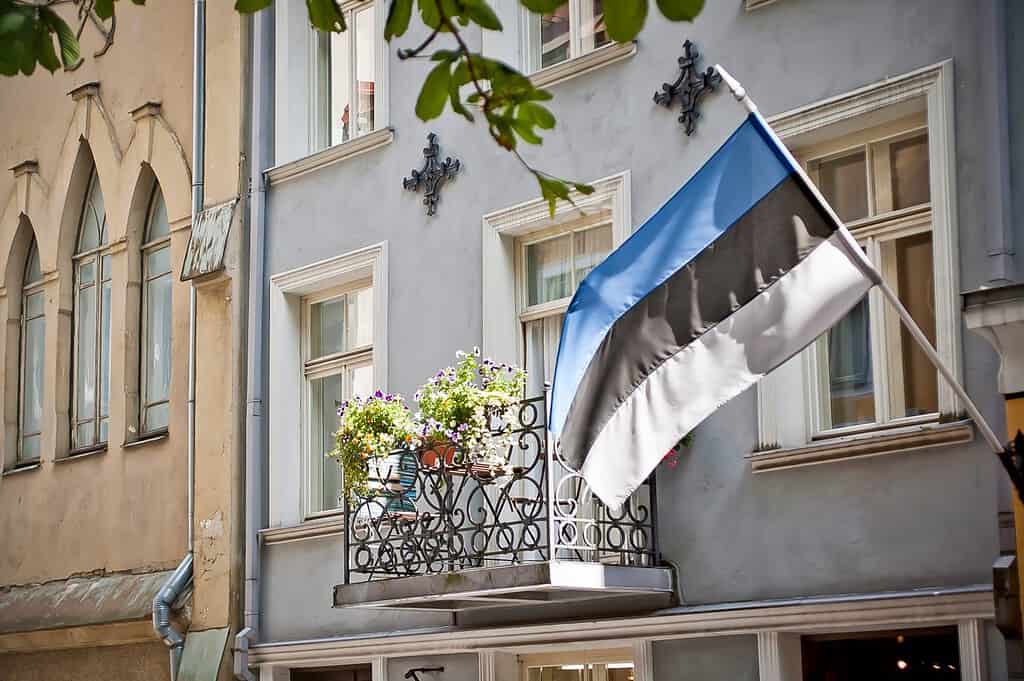
The architecture in Estonia favors the Baroque and Rococo styles.
©e.backlund/Shutterstock.com
Fun Fact: Skype video-calling originated in Estonia in a start-up founded by Ahti Heinla, Priit Kasesalu, Jaan Tallinn, and Toivo Annus.
Joined NATO: 2004
Location/Border States: Located in northeastern Europe, Estonia shares a border with Russia and Latvia, in addition to the Baltic Sea.
Government type: Parliamentary republic
Population: About 1.3 million
Finland (2023)
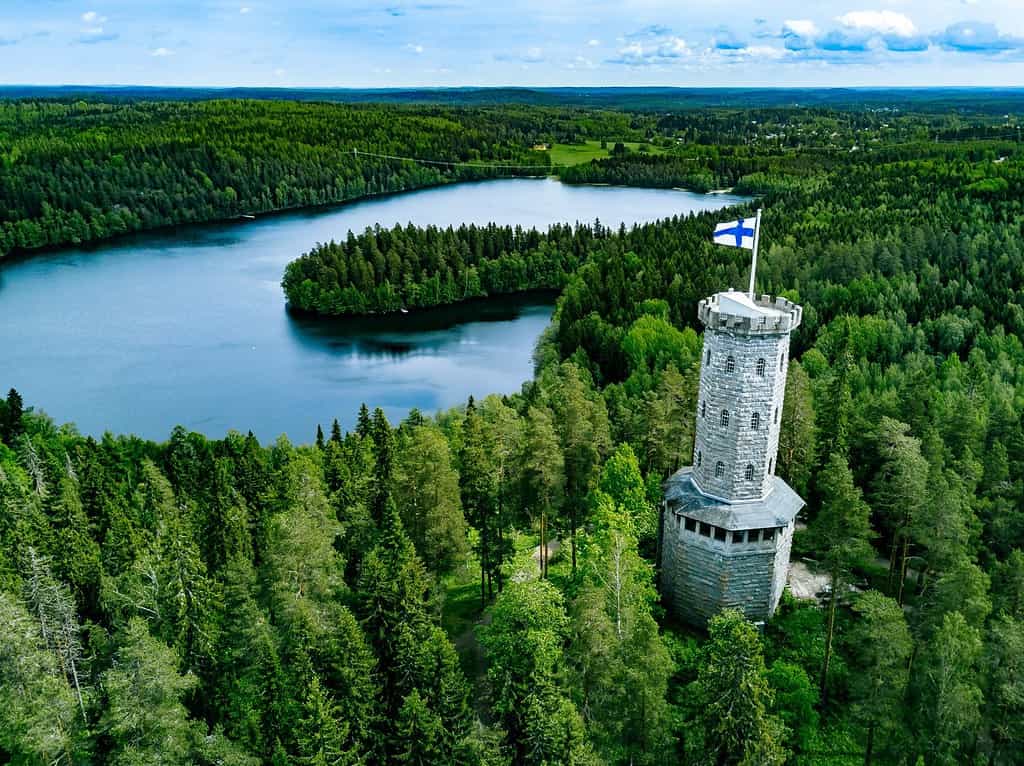
Visitors climb to the top of Finland’s Aulanko Observation Tower to see sweeping views of Lake Vanajavesi.
©nblx/Shutterstock.com
Fun Fact: Rovio Entertainment created Angry Birds, the mobile game sensation, in Finland.
Joined NATO: The latest member since 2023
Location/Border States: Bordered by Norway, Russia, the Gulf of Finland, the Gulf of Bothnia, and Sweden
Government type: Parliamentary republic
Population: About 5.5 million
France (1949)

The Eiffel Tower is Paris’ tallest building and contains several restaurants, stores, and a viewing deck.
©lazyllama/Shutterstock.com
Fun Fact: Phillippe Kahn, inventor and entrepreneur, created the first camera phone in 1997.
Joined NATO: A founding member of NATO since 1949
Location/Border States: Bordered by Germany, Belgium, the Atlantic Ocean, and Spain, in addition to the Pyrenees Mountains
Government type: Semi-presidential republic
Population: About 64.8 million
Germany (1955)

The Reichstag Building has a splendid glass dome you can visit via an elevator.
©Jojoo64/Shutterstock.com
Fun Fact: Hans Riegel created Gummy Bears in 1920 inspired by Japanese rice candy and Turkish delight.
Joined NATO: 1955
Location/Border States: Located in central Europe, Germany is bordered by Denmark, the Netherlands, Belgium, Luxembourg, the Czech Republic, Poland, France, Switzerland, and Austria, in addition to the Baltic and North Seas.
Government type: Federal parliamentary republic
Population: About 83.2 million
Greece (1952)

Greece features Europe’s longest coastline.
©Natalya Zatsarinnaya/Shutterstock.com
Fun Fact: The first depiction of the yo-yo was found in Greece in 500 B.C.
Joined NATO: 1952
Location/Border States: Located in southeast Europe, Greece borders Albania, Bulgaria, Turkey, and North Macedonia in addition to maritime borders with Libya, Italy, Egypt, and Cyprus.
Government type: Parliamentary republic
Population: About 10.3 million
Hungary (1999)

The Hungarian Parliamentary Building is the third-largest in the world and welcomes over 7,000 annual visitors.
©Raketir/Shutterstock.com
Fun Fact: Erno Rubik, professor of architecture and sculpture, invented the 3-D combination puzzle Rubik’s Cube in 1974.
Joined NATO: 1999
Location/Border States: This landlocked country in southeastern Europe borders the Balkans, Slovenia, Ukraine, Serbia, Austria, Croatia, Romania, and Slovakia.
Government type: Parliamentary representative democratic republic
Population: About 10 million
Iceland (1949)
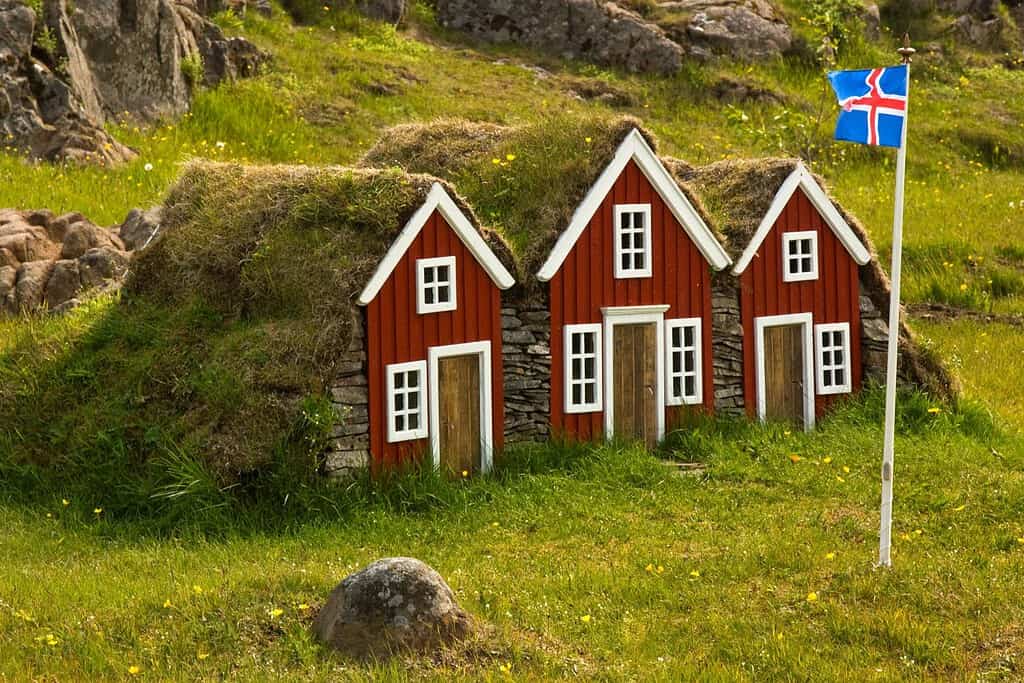
Icelanders erect small fairy houses, or alfhol, to warn about the presence of Huldufólk, or hidden people, in the area.
©www.sandatlas.org/Shutterstock.com
Fun Fact: The Arctic fox, Iceland’s one native mammal, is thought to have originated from the Ice Age.
Joined NATO: A founding member of NATO since 1949
Location/Border States: Located south of the Arctic Circle, this island nation in the North Atlantic Ocean, located on the Mid-Atlantic Ridge, has a maritime border with Ireland, the United Kingdom, Greenland, and Norway.
Government type: Parliamentary republic
Population: About 376,000
Italy (1949)

Inventions from Italy include the battery, pizza, and the piano.
©Philipp Dase/Shutterstock.com
Fun Fact: Alessandro Volta, born in 1745, invented the battery. The word volt derives from his last name.
Joined NATO: A founding member of NATO since 1949
Location/Border States: This southeastern European nation borders Switzerland, Austria, France, and Slovenia. In addition, the Adriatic, the Sea of Sicily, the Ionian, Ligurian, Tyrrhenian, and Mediterranean Seas. Its maritime borders are with Tunisia, Spain, Montenegro, Malta, Libya, Greece, Croatia, Algeria, and Albania.
Government type: Parliamentary republic
Population: About 58.7 million
Latvia (2004)
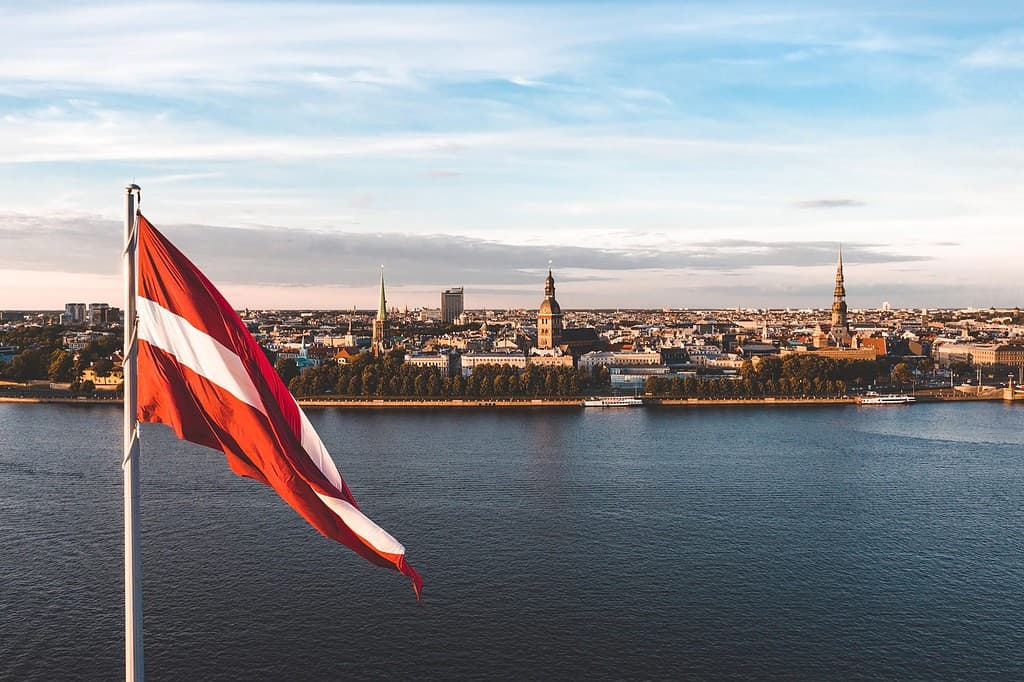
Once part of the Soviet Union, Latvia gained its full independence in 1991.
©Pandora Pictures/Shutterstock.com
Fun Fact: Jacob W. Davis, a Latvian tailor, invented jeans in 1872. Levi Strauss was brought in to assist with funding and patenting the design.
Joined NATO: 2004
Location/Border States: This northeastern European country is bordered by Estonia, Lithuania, Russia, Belarus, the Gulf of Riga, and the Baltic Sea in addition to a maritime boundary with Sweden.
Government type: Parliamentary republic
Population: About 1.8 million
Lithuania (2004)
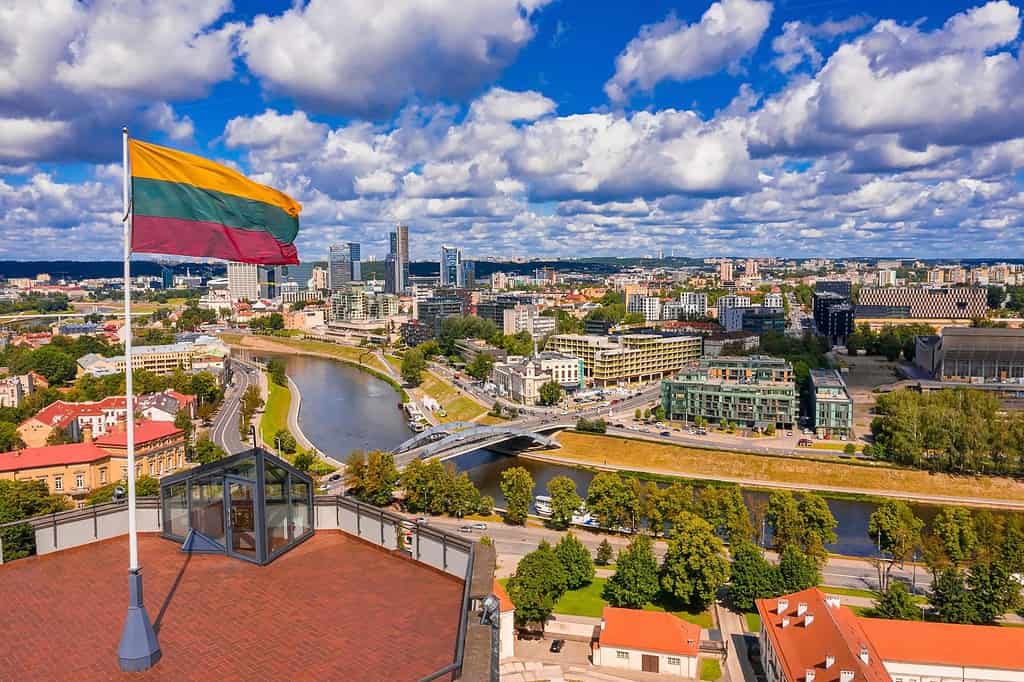
Researchers believe that Lithuanian is the oldest surviving Indo-European language.
©Pandora Pictures/Shutterstock.com
Fun Fact: The Baltic Sea coastline is abundant with amber, making this nation famous for its amber jewelry.
Joined NATO: 2004
Location/Border States: This northeastern European country borders the Baltic Sea, Belarus, Russia, Poland, and Latvia in addition to a maritime border with Sweden.
Government type: Parliamentary republic
Population: About 2.7 million
Luxembourg (1949)
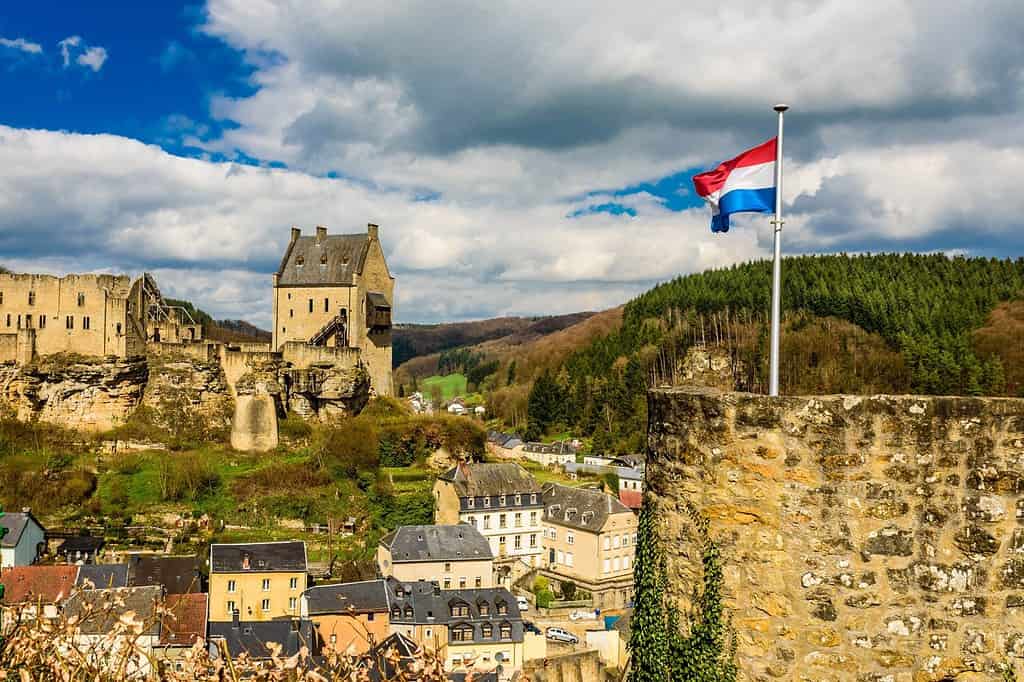
Luxembourg is one of the richest countries in the world and also one of the most expensive.
©Mikel Trako/Shutterstock.com
Fun Fact: Luxembourg offers free public transportation throughout the country whether by bus, train, or tram.
Joined NATO: A founding member of NATO since 1949
Location/Border States: This landlocked country in northwestern Europe borders France, Belgium, and Germany.
Government type: Parliamentary constitutional monarchy
Population: About 658,000
Montenegro (2017)
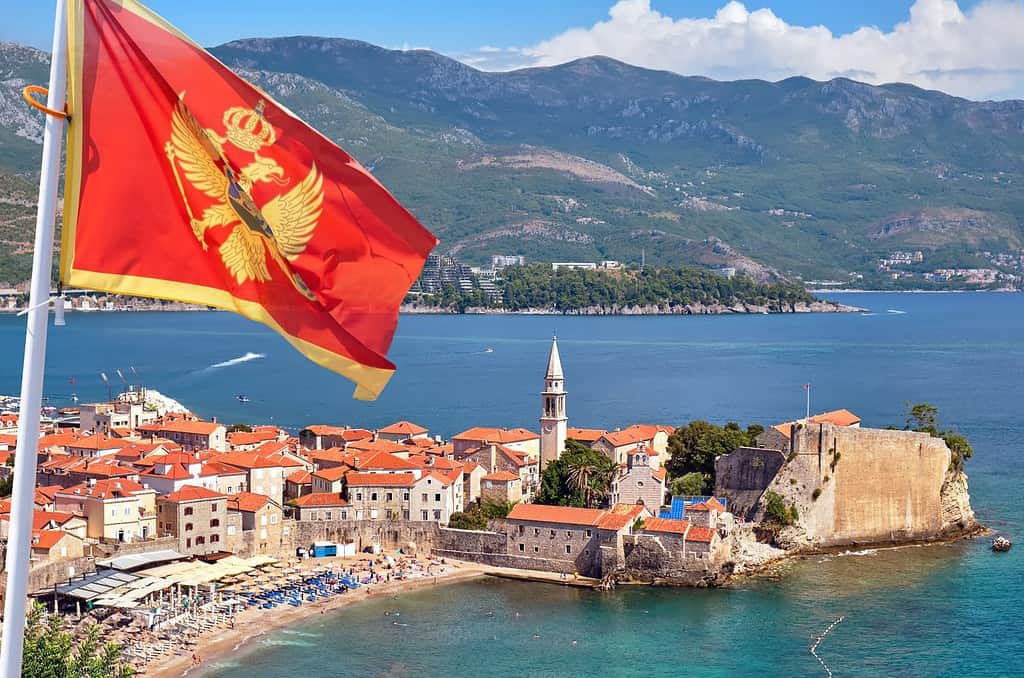
The country of Montenegro became a country in 2006.
©Carmian/Shutterstock.com
Fun Fact: Lake Skadar is one of the largest bird reserves in Europe and home to over 270 bird species.
Joined NATO: 2017
Location/Border States: Montenegro, located in southeastern Europe, borders Albania, Kosovo, Serbia, Bosnia and Herzegovina, and Croatia, in addition to the Adriatic Sea.
Government type: Parliamentary republic
Population: About 626,000
Netherlands (1949)
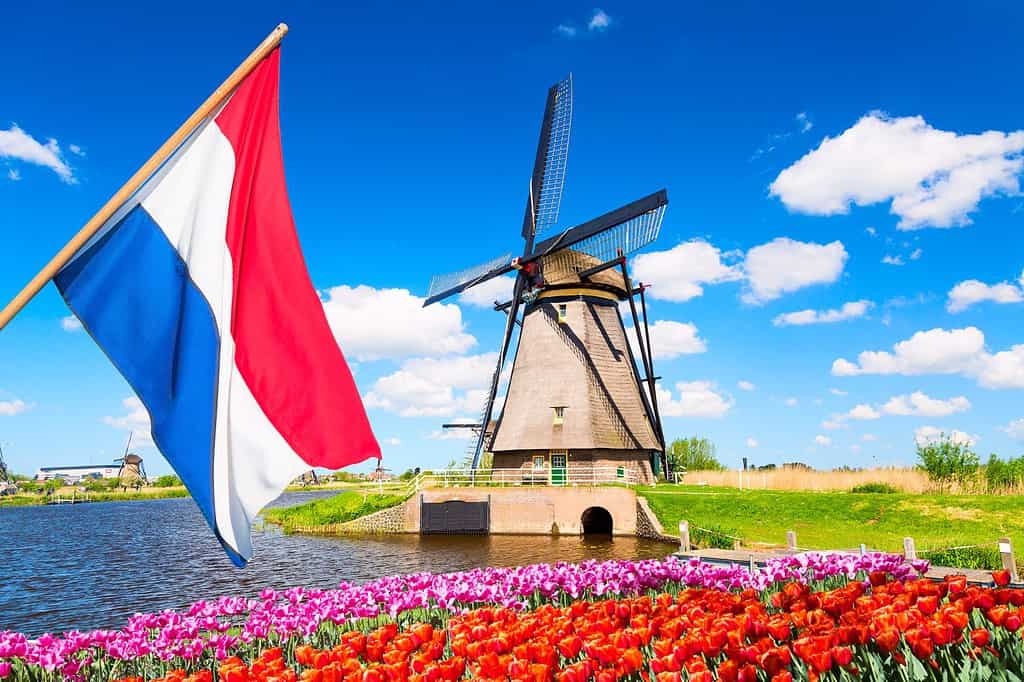
Windmills in the Netherlands date back to the 13th century.
©Nick N A/Shutterstock.com
Fun Fact: Modern-day gin originates from an ancient Dutch liquor, “genever,” meaning juniper. In the 16th century, this juniper tonic, thought to be medicinal, was used to ward off the Black Death or the plague.
Joined NATO: A founding member of NATO since 1949
Location/Border States: This western European country is bordered by Germany, and Belgium, in addition to the North Sea.
Government type: Constitutional monarchy
Population: About 17.6 million
North Macedonia (2020)
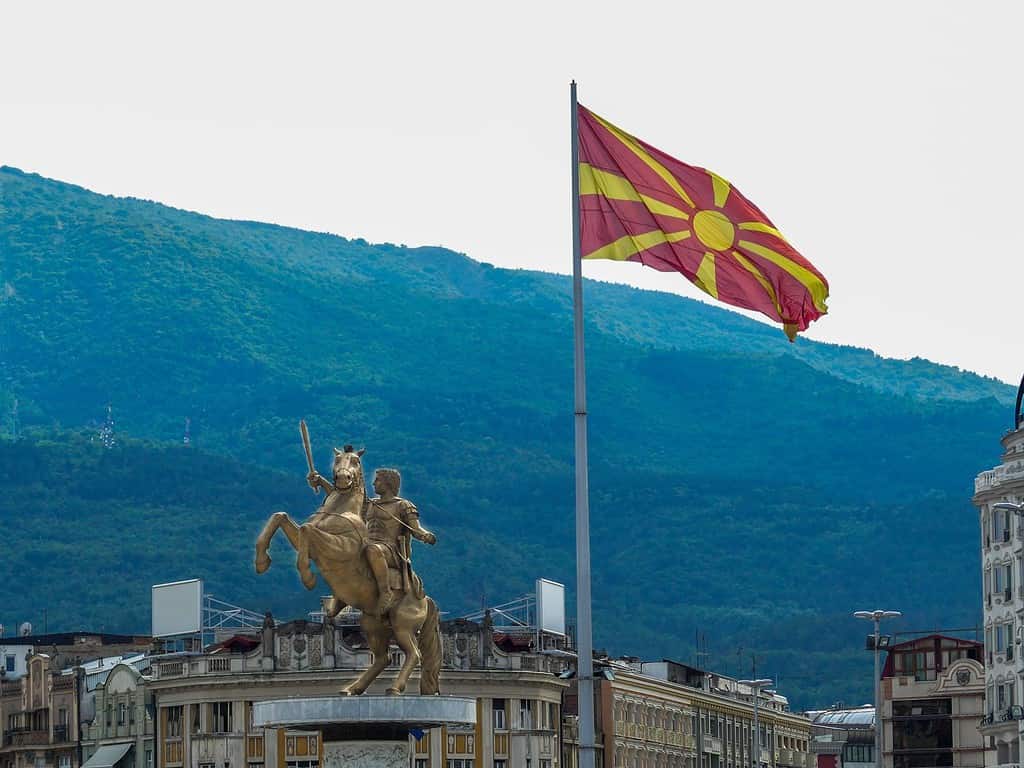
Macedonia grew under the reign of Alexander the Great, and many believe the statue on its parliament building depicts the warrior.
©Lorenzo Falk/Shutterstock.com
Fun Fact: Lake Ohrid is estimated to be around 4 million years old. It is, indeed, one of the oldest and deepest lakes in Europe with a maximum depth of 940 feet (288 m.)
Joined NATO: 2020
Location/Border States: Located in southeastern Europe, North Macedonia borders Greece, Serbia, Kosovo, Bulgaria, and Albania.
Government type: Parliamentary republic
Population: About 2 million
Norway (1949)

The multi-colored houses of Bergen, Norway inspired the look of Arendelle in Disney’s animated movie “Frozen.”
©May_Lana/Shutterstock.com
Fun Fact: Sondre Norheim is the father of modern skiing, in the late 19th century he designed ski bindings that led to modern-day skis.
Joined NATO: A founding member of NATO since 1949
Location/Border States: This northern European country borders Russia, Finland, and Sweden, as well as the Skager Strait, and the North and Norwegian Seas.
Government type: Constitutional monarchy
Population: About 5.4 million
Poland (1999)
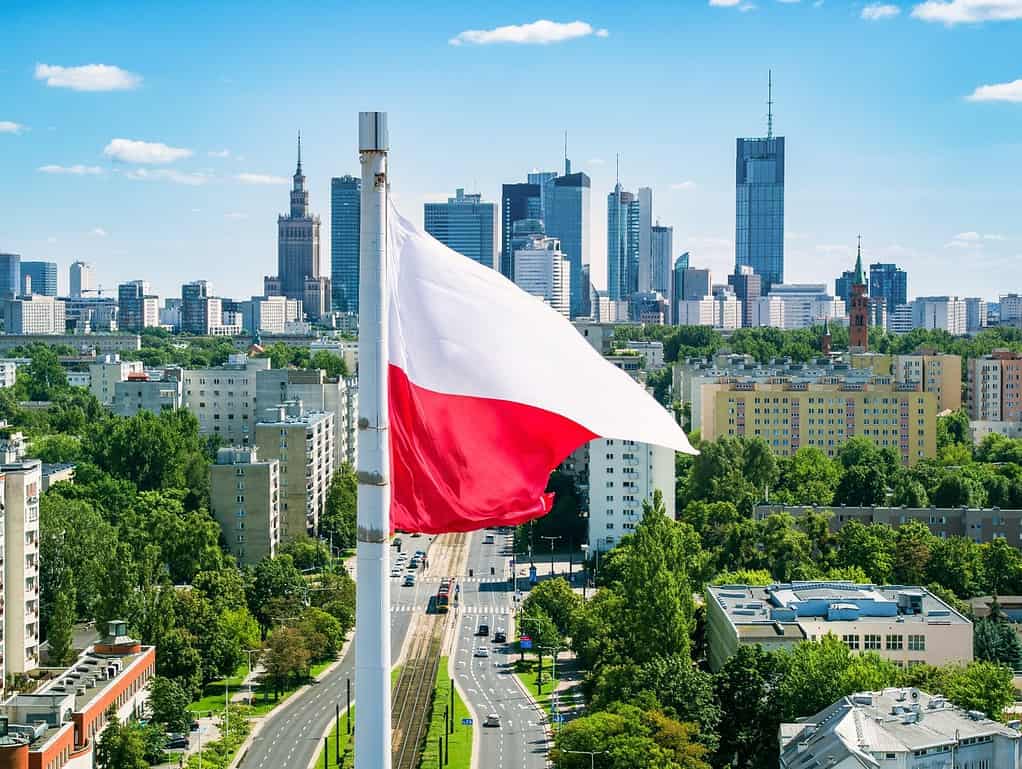
May 2nd marks the celebration of Polish National Flag Day in Poland.
©Lukasz Pawel Szczepanski/Shutterstock.com
Fun Fact: Nicolaus Copernicus, born on February 19, 1473, established the heliocentric solar system concept, stating that the sun is the center of the universe.
Joined NATO: 1999
Location/Border States: Bordered by Russia, Lithuania, Belarus, Ukraine, Slovakia, the Czech Republic, and Germany in addition to the Baltic Sea
Government type: Parliamentary republic
Population: About 40.5 million
Portugal (1949)

The flag of Portugal features seven castles, and each represents a property the country took back from the Moors.
©BrasilNut1/iStock via Getty Images
Fun Fact: The Treaty of Tordesillas, signed in 1494, gave half of the “New World” to Portugal, making it the first global empire.
Joined NATO: A founding member of NATO since 1949
Location/Border States: Located in southwestern Europe with the archipelagos of the Azores and Madeira in the Atlantic Ocean, Portugal borders Spain in addition to a maritime border with Morocco.
Government type: Semi-presidential republic
Population: About 10.2 million
Romania (2004)
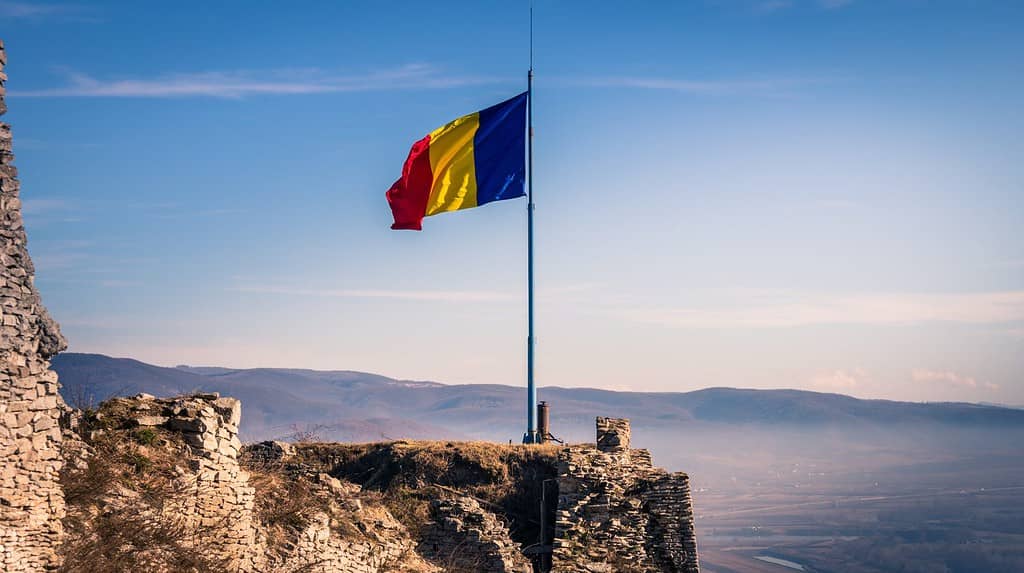
Romania has nine sites on the UNESCO World Heritage List.
©MrZoli/Shutterstock.com
Fun Fact: Romania is halfway between the North Pole and the Equator.
Joined NATO: 2004
Location/Border States: Located in southeastern Europe, Romania borders Moldova, Bulgaria, Serbia, Hungary, and Ukraine, in addition to the Black Sea.
Government type: Semi-presidential government
Population: About19.7 million
Slovakia (2004)

Bratislava Castle in Slovakia is home to the Slovak National Museum’s Museum of History.
©David Vadkerti/Shutterstock.com
Fun Fact: American pop artist Andy Warhol’s parents Andrej and Julia Warhola were born in Slovakia
Joined NATO: 2004
Location/Border States: This landlocked country in central Europe shares its borders with Ukraine, Poland, Hungary, the Czech Republic, and Austria.
Government type: Parliamentary democratic republic
Population: About 5.7 million
Slovenia (2004)
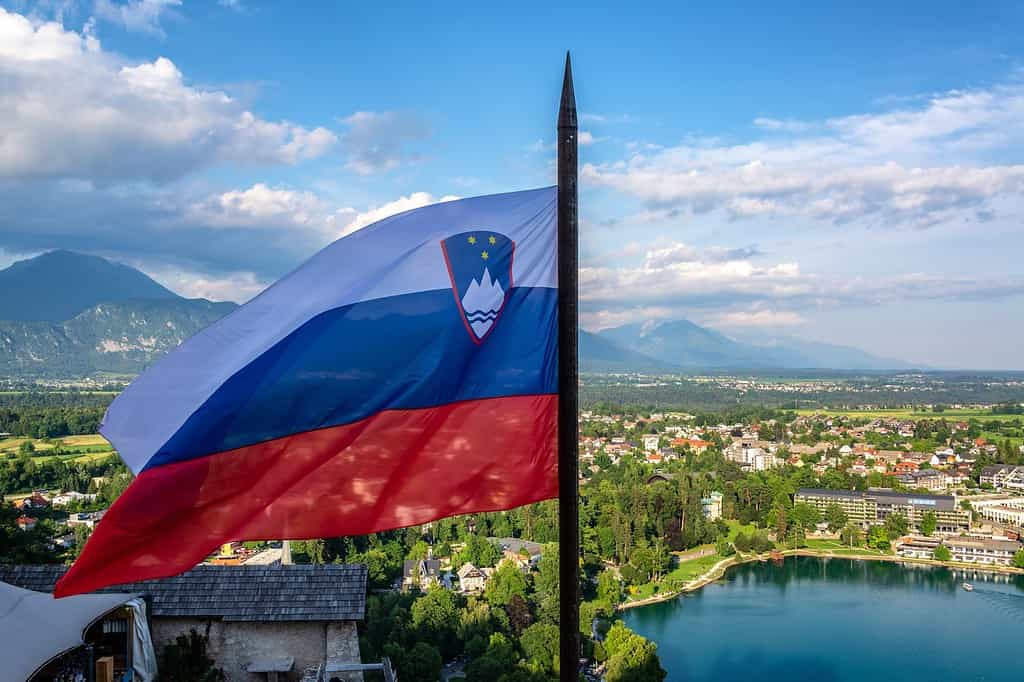
Symbols of Slovenia include the Lipizzaner
horse
and Mount Triglav, which appears on the country’s flag.
©Structured Vision/Shutterstock.com
Fun Fact: Lake Bled, surrounded by mountains with a medieval castle in its center, is one of the most beautiful lakes in the world.
Joined NATO: 2004
Location/Border States: This southeastern European country borders Italy, Hungary, Croatia, and Austria, in addition to the Adriatic Sea.
Government type: Parliamentary democratic republic
Population: About 2.2 million
Spain (1982)

The Sagrada Família church, still under construction, holds the tomb of its designer, Antoni Gaudi.
©Eszter Szadeczky-Kardoss/Shutterstock.com
Fun Fact: For over 140 years, Antoni Gaudi’s La Sagrada Familia Roman Catholic Basilica in Barcelona has been under construction.
Joined NATO: 1982
Location/Border States: Spain, located on the Iberian Peninsula in southwestern Europe, borders the Pyrenees Mountains, France, Andorra, Portugal, in addition to the Atlantic Ocean, the Mediterranean Sea, and the Bay of Biscay.
Government type: Parliamentary democracy and constitutional monarchy
Population: About 47.4 million
Türkiye (1952)
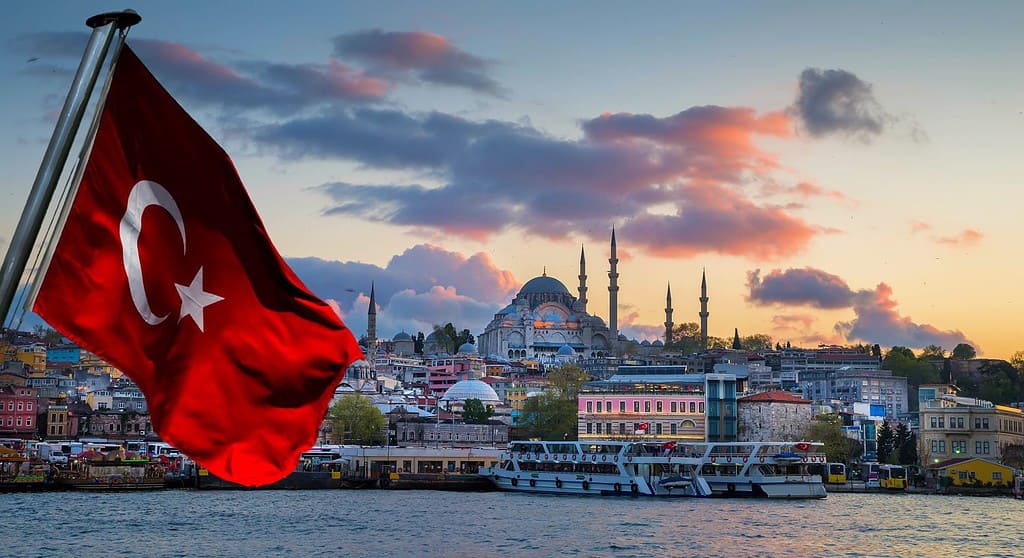
The ancient archaeological site and city of Troy is in Türkiye.
©Seqoya/Shutterstock.com
Fun Fact: The ancient archaeological site and city of Troy is in Türkiye.
Joined NATO: 1952
Location/Border States: Located in southeastern Europe, Türkiye borders Bulgaria, Greece, Syria, Iraq, Iran, Azerbaijan, Armenia, and the Black and Mediterranean Seas in addition to a maritime border with Cyprus.
Government type: Republican parliamentary democracy
Population: About 86 million
United Kingdom (1949)
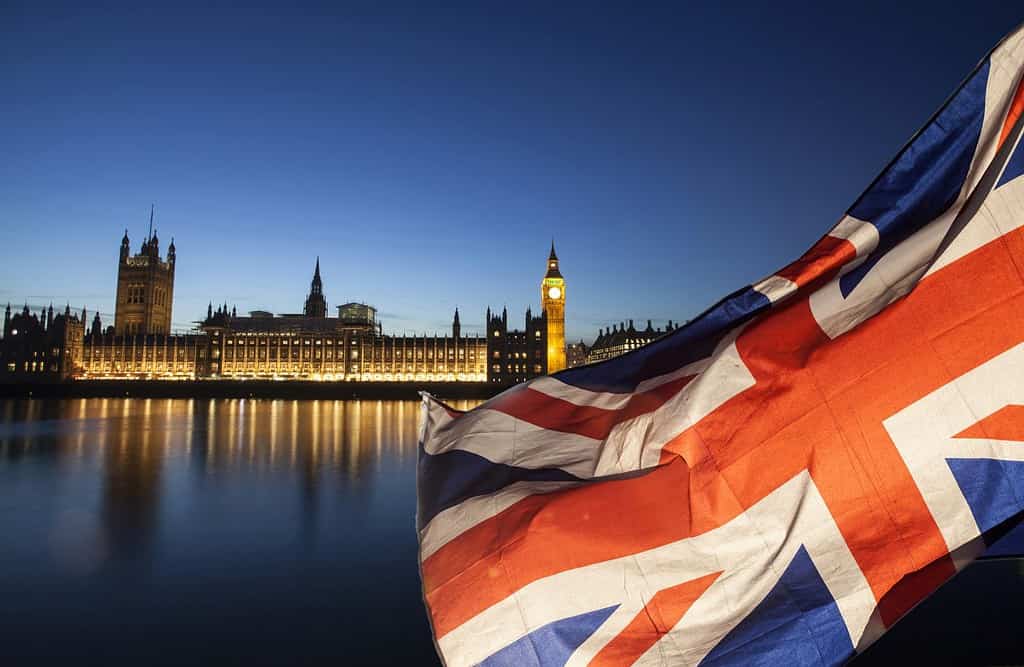
Big Ben’s proper name is Elizabeth Tower, as “Big Ben” actually refers to the tower’s largest bell.
©Melinda Nagy/Shutterstock.com
Fun Fact: William Shakespeare contributed around 1,700 words to the English language.
Joined NATO: A founding member of NATO since 1949
Location/Border States: Located in northwestern Europe on the archipelago called the British Isles, the United Kingdom is made up of Northern Ireland, Scotland, Wales, and England. Its one land border is with Ireland. Maritime borders are shared with Denmark, Norway, the Netherlands, Germany, France, and Belgium in addition to the North Atlantic Ocean, the North Sea, and the English Channel.
Government type: Constitutional monarchy
Population: About 67.8 million
United States (1949)
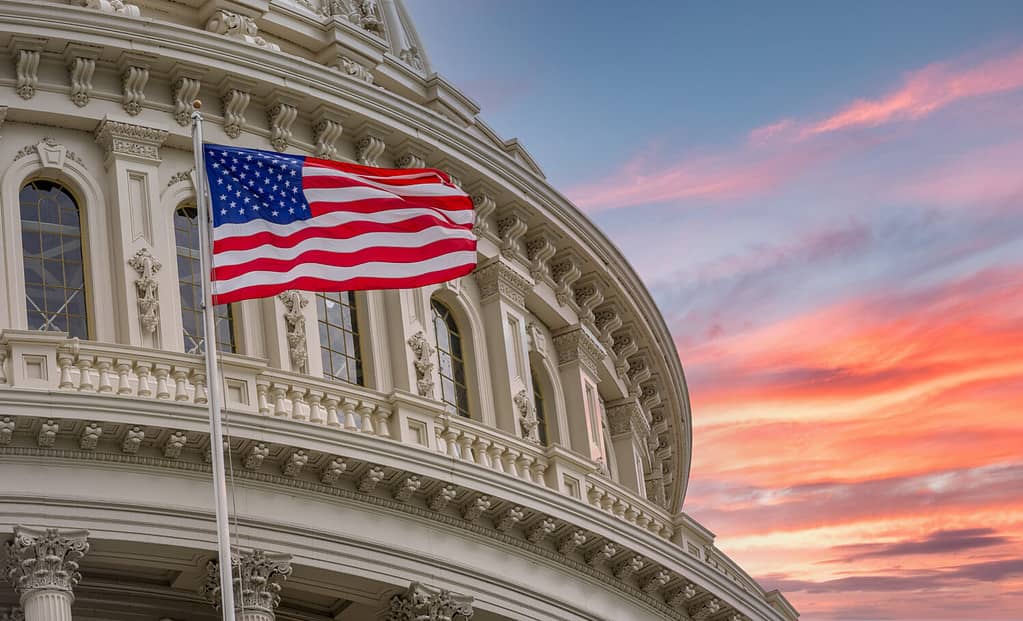
The United States flag has gone through 27 versions.
©tokar/Shutterstock.com
Fun Fact: In 1969, Astronauts Neil Armstrong and Buzz Aldrin were the first to walk on the moon.
Joined NATO: A founding member of NATO since 1949
Location/Border States: Located in North America, the United States borders Canada, Mexico, and the Pacific and Atlantic Oceans, in addition to maritime borders with Russia, Cuba, and the Bahamas.
Government type: Constitutional federal republic
Population: About 341 million
Summary of 31 Countries that are Member States of NATO
| Founding members from 1949 |
| Belgium |
| Canada |
| Denmark |
| France |
| Iceland |
| Italy |
| Luxembourg |
| Netherlands |
| Norway |
| Portugal |
| United Kingdom |
| United States |
| Cold War expansion |
| Greece, 1952 |
| Turkey, 1952 |
| West Germany, 1955 |
| Spain, 1982 |
| Post–Cold War expansion |
| Germany, 1990 (German reunification) |
| Czechia (Czech Republic), 1999 |
| Hungary, 1999 |
| Poland, 1999 |
| Bulgaria, 2004 |
| Estonia, 2004 |
| Latvia, 2004 |
| Lithuania, 2004 |
| Romania, 2004 |
| Slovakia, 2004 |
| Slovenia, 2004 |
| Albania, 2009 |
| Croatia, 2009 |
| Montenegro, 2017 |
| North Macedonia, 2020 |
| Finland, 2023 |
The photo featured at the top of this post is © Devonyu/iStock via Getty Images
Thank you for reading! Have some feedback for us? Contact the AZ Animals editorial team.






